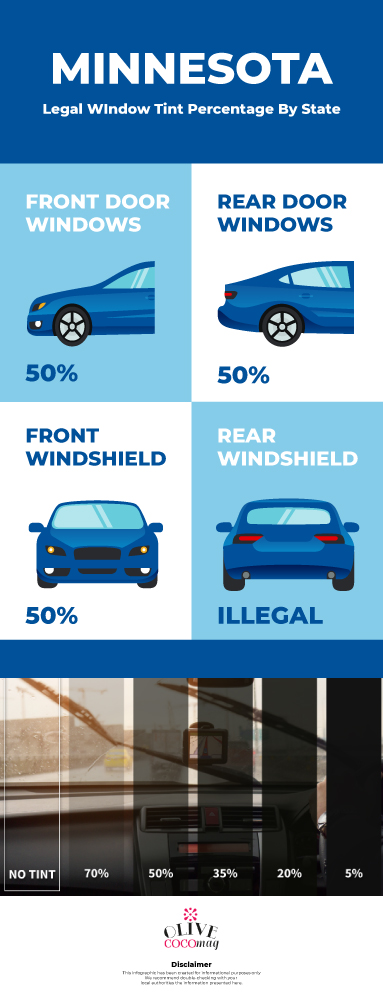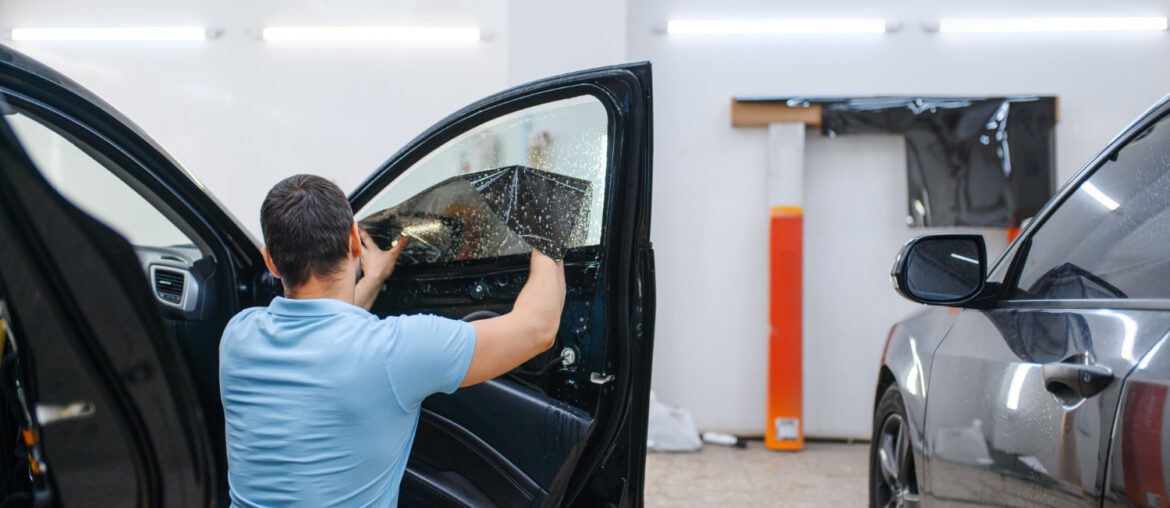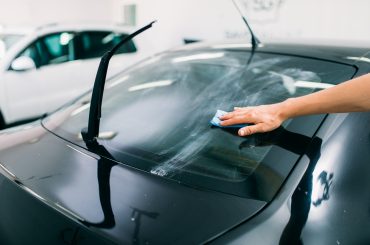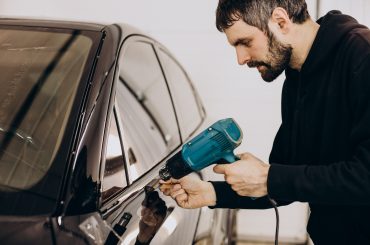Minnesota window tint laws were enacted in 1985. This is a compilation of all the necessary details you should know when getting your vehicles tinted in the state of Minnesota. The amount of light that is allowed to be penetrated into the vehicle through the windows is determined by a Visible Light Transmission factor known as the VLT percentage. There are special tint meters used by the state patrol to determine whether the vehicles have the required amount of VLT present on their tint.
There are two types of meters used by them for this. The first is a meter that slides over the window and indicates the tint percentage as a digital output. The second meter has two pieces and is used for the rear window and other windows that cannot be rolled down.

Table of Contents
Window Tint Darkness in Minnesota
The amount of light transmitted through the vehicle windows would determine the vision of the driver. The following are the legal limitations of VLT percentages.
Tint darkness for sedans:
- Windshield: No tint is allowed on the windshield.
- Front Side windows: Must allow more than 50% of light in.
- Back Side windows: Must allow more than 50% of light in.
- Rear Window: Must allow more than 50% of light in.
Tint darkness for SUV and vans:
- Windshield: No tint is allowed on the windshield.
- Front Side windows: Must allow more than 50% of light in.
- Back Side windows: Any darkness can be used.
- Rear Window: Any darkness can be used.
Window Tint Reflection in Minnesota
The reflection of window tint determines the reduction of glare and interior comfort. The VLT percentages for reflection are as follows.
Tint reflection for sedans, SUVs, and vans:
- Front Side windows: Must not be more than 20% reflective.
- Back Side windows: Must not be more than 20% reflective.
Other Minnesota Window Tint Rules and Regulations
The following are some other regulations and legal requirements in the Minnesota window tint laws.
Side Mirrors
There are no restrictions or requirements imposed on side mirrors in the state of Minnesota.
Restricted Colors
There are no restricted colors for window tint.
Tint Variance
A tint variance of 3% is allowed by the Minnesota window tint laws.
Certificates and Stickers
It is not necessary for manufacturers to certify the film they sell in this state. However, there should be a sticker between the film and the glass on the driver’s side window for the identification of legal tinting.
Medical Exceptions
The state of Minnesota allows medical exemptions for special tint.
Cost of a Window Ticket in Minnesota
In case you get caught for having an illegal window tint in the state of Minnesota, you would be charged with a fine of $135. However, it would be better to be concerned about following the legal limitations, as they are imposed to ensure the proper visibility of drivers and reduce the risk of road accidents.
Therefore, in case you have illegal window tints with darkness more than the required amount, you are recommended to remove the window tint. For this, you may refer to How to Remove Window Tint.
If you are looking to re-install new window films on your car windows, find the suitable type for your requirement from Types of Window Tint. Make sure to follow Window Tinting Aftercare Tips after you tint your car windows.
- Florida Tint Laws For Vehicles 2021
- Connecticut Tint Laws For Vehicles 2021
- ReTinting Car Windows: Why, How, And When?
- Florida Window Tint Laws: Things You Need To Know Before Tinting
- Tennessee Window Tint Laws – 2021
State of Minnesota Information
The state of Minnesota is situated in the Midwestern region of the United States. It was declared as the 32nd state on 11th May 1858. This is known as the “Land of ten thousand Lakes” and its name is derived from a Dakota word which means “sky-tinted water”. These lakes, forests, and wilderness create a major tourist attraction.
This is also the 12th most extensive state and also the 21st most populous out of all the 50 states. Its capital city is Saint Paul. The total population is over 5.3 million and the land area is 86,939 square miles (225,181 square kilometers).
Keep in mind that Minnesota tint laws can change daily and may be interpreted differently in your city or county. To be sure, we recommend double-checking our information with your local DMV or Law Enforcement Authorities. Furthermore please let us know if there are any changes to make.








